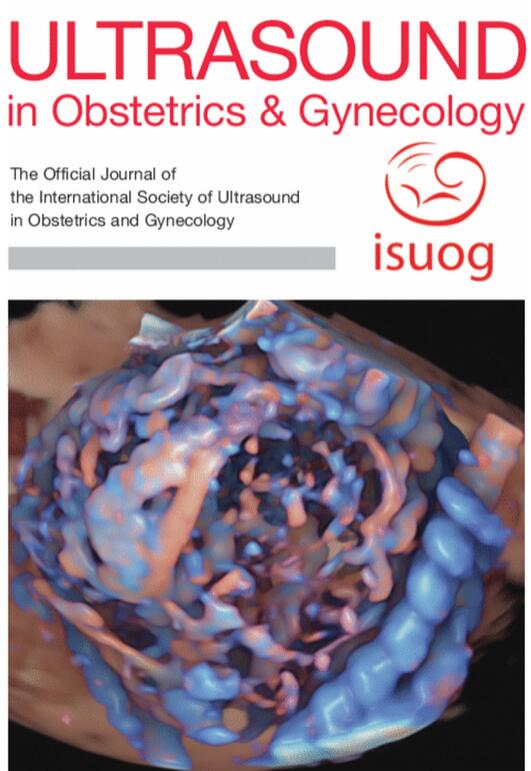Enhancing trainee performance in obstetric ultrasound through an artificial intelligence system: randomized controlled trial
IF 6.1
1区 医学
Q1 ACOUSTICS
引用次数: 0
Abstract
ObjectivePerforming obstetric ultrasound scans is challenging for inexperienced operators; therefore, the prenatal screening artificial intelligence system (PSAIS) software was developed to provide real‐time feedback and guidance for trainees during their scanning procedures. The aim of this study was to investigate the potential benefits of utilizing such an artificial intelligence system to enhance the efficiency of obstetric ultrasound training in acquiring and interpreting standard basic views.MethodsA prospective, single‐center randomized controlled study was conducted at The First Affiliated Hospital of Sun Yat‐sen University. From September 2022 to April 2023, residents with no prior obstetric ultrasound experience were recruited and assigned randomly to either a PSAIS‐assisted training group or a conventional training group. Each trainee underwent a four‐cycle practical scan training program, performing 20 scans in each cycle on pregnant volunteers at 18–32 gestational weeks, focusing on acquiring and interpreting standard basic views. At the end of each cycle, a test scan evaluated trainees' ability to obtain standard ultrasound views without PSAIS assistance, and image quality was rated by both the trainees themselves and an expert (in a blinded manner). The primary outcome was the number of training cycles required for each trainee to meet a certain standard of proficiency (i.e. end‐of‐cycle test scored by the expert at ≥ 80%). Secondary outcomes included the expert ratings of the image quality in each trainee's end‐of‐cycle test and the discordance between ratings by trainees and the expert.ResultsIn total, 32 residents and 1809 pregnant women (2720 scans) were recruited for the study. The PSAIS‐assisted trainee group required significantly fewer training cycles compared with the non‐PSAIS‐assisted group to meet quality requirements (通过人工智能系统提高产科超声培训学员的成绩:随机对照试验
产前筛查人工智能系统(PSAIS)软件可在扫描过程中为学员提供实时反馈和指导。本研究旨在探讨利用该人工智能系统提高产科超声培训中获取和解释标准基本视图的效率的潜在益处。方法在中山大学附属第一医院开展了一项前瞻性、单中心随机对照研究。从 2022 年 9 月至 2023 年 4 月,中山大学附属第一医院招募了没有产科超声经验的住院医师,并将他们随机分配到 PSAIS 辅助培训组或传统培训组。每位受训者接受四个周期的实际扫描培训,每个周期对18-32孕周的孕妇志愿者进行20次扫描,重点是获取和解释标准的基本视图。每个周期结束时,都会进行一次测试扫描,评估受训者在没有 PSAIS 辅助的情况下获取标准超声图像的能力,图像质量由受训者本人和专家(以盲法)共同评定。主要结果是每位学员达到一定熟练标准所需的培训周期数(即专家对周期结束测试的评分≥80%)。次要结果包括专家对每位学员周期终了测试图像质量的评分,以及学员评分与专家评分之间的不一致性。结果本研究共招募了 32 名住院医师和 1809 名孕妇(2720 次扫描)。与非 PSAIS 辅助组相比,PSAIS 辅助组学员为达到质量要求所需的培训周期明显减少(P = 0.037)。根据专家对图像质量的评分,与传统训练组相比,PSAIS 辅助训练组在第三个周期(P = 0.012)和第四个周期(P < 0.001)获得标准成像视图的能力更强。在两组中,随着训练时间的增加,学员对自己图像质量的评分与专家评分之间的不一致性降低。在第一个培训周期结束时,两组学员与专家的总体评分不一致程度出现了统计学意义上的显著差异,并在此后的每个培训周期都保持了这一差异(P < 0.013)。© 2024 国际妇产科超声学会。
本文章由计算机程序翻译,如有差异,请以英文原文为准。
求助全文
约1分钟内获得全文
求助全文
来源期刊
CiteScore
12.30
自引率
14.10%
发文量
891
审稿时长
1 months
期刊介绍:
Ultrasound in Obstetrics & Gynecology (UOG) is the official journal of the International Society of Ultrasound in Obstetrics and Gynecology (ISUOG) and is considered the foremost international peer-reviewed journal in the field. It publishes cutting-edge research that is highly relevant to clinical practice, which includes guidelines, expert commentaries, consensus statements, original articles, and systematic reviews. UOG is widely recognized and included in prominent abstract and indexing databases such as Index Medicus and Current Contents.

 求助内容:
求助内容: 应助结果提醒方式:
应助结果提醒方式:


